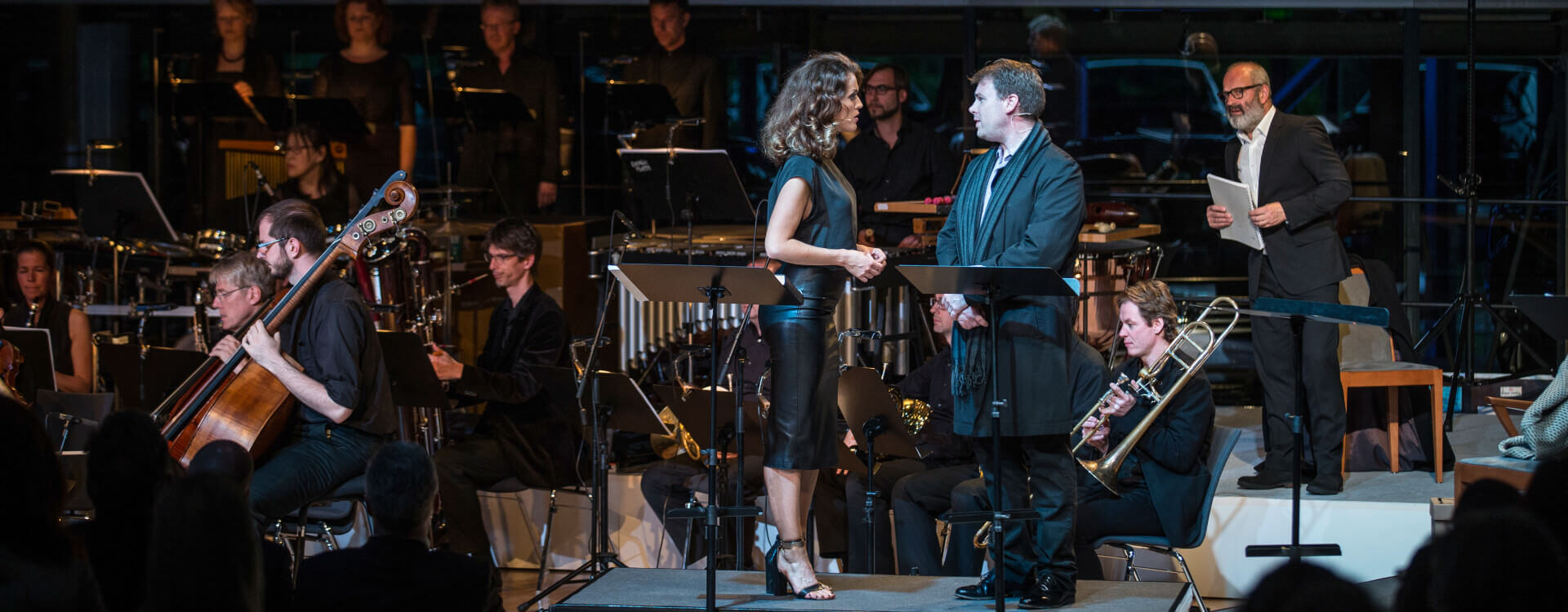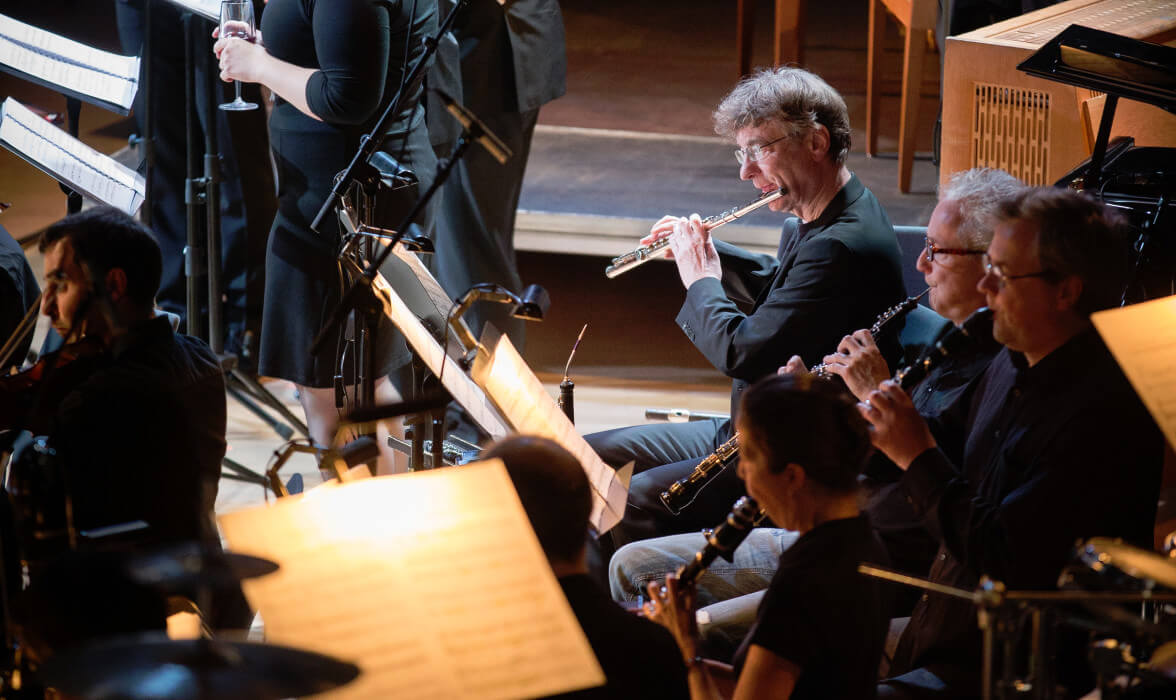A Quiet Place
Oper von Leonard Bernstein in Neufassung für Kammerensemble›A Quiet Place‹ is Leonard Bernstein’s last work of musical theatre. Conceived as a one-act sequel to ›Trouble in Tahiti‹ (1951), it had its world premiere as a double bill shared with the latter in Houston, Texas, in 1983. The music, full of complex fragmentations and innuendo, and Stephen Wadsworth’s libretto, focusing on subjects like suicide, homosexuality, alienation and mental aberration, made ›A Quiet Place‹ a difficult work for the audience, especially in comparison with its lighter-weight predecessor: ›Trouble in Tahiti‹ satirises the daily life of a married couple in an American suburb of the 1950s. Palisade fences, food processors and dapper clothes cannot disguise the fact that the spouses Dinah and Sam no longer have anything to say to each other. ›A Quiet Place‹ is set thirty years later: the family reconvenes at the graveside of Dinah, who has been killed in a motoring accident. Sam and Dinah’s adult children have become estranged from their father. Grief, old and new wounds and the protagonists’ inability to deal with their lives all come together, leading into a domestic storm.
Not only the controversial reviews after the world premiere, but also Bernstein’s and Wadsworth’s discontent with the work contributed to the decision to turn the two one-act operas into an evening-length piece in three acts. ›Trouble in Tahiti‹ was integrated into ›A Quiet Place‹ as flashbacks. This revised version had its first performance in Milan in 1984 and was released in 1986 by Deutsche Grammophon. However, this version soon also disappeared – with very few exceptions – from the opera stage, which seems odd, given Bernstein’s popularity.
But even for Bernstein himself, the three-act version was only a compromise solution, as he once told Kent Nagano. Together with the Leonard Bernstein Office (Garth Edwin Sunderland), the latter has now edited a new version of ›A Quiet Place‹ for chamber ensemble. The original instrumentation, calling for large orchestra, synthesizer and electric guitar, has been reduced to a smaller ensemble, thus diminishing the numbers necessary for a concert performance, the action tightened and the formal structure of the opera simplified by eliminating the flashbacks to ›Trouble in Tahiti‹. Under the baton of Kent Nagano, the world premiere of the new version took place at Konzerthaus Berlin.
However, there is a good dose of Bernstein’s antidote in ›A Quiet Place‹: an irrepressible longing for love which breaks open the armour and [...] opens the path into the garden, towards grief and forgiveness.Der Tagesspiegel, Ulrich Amling

